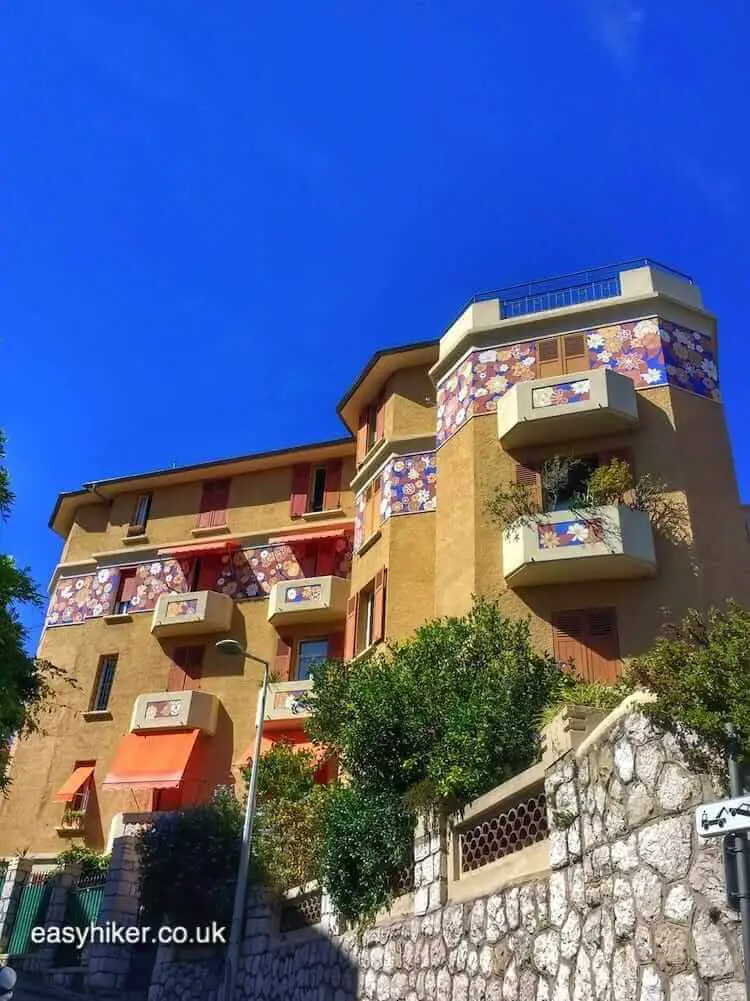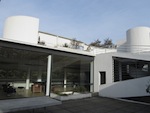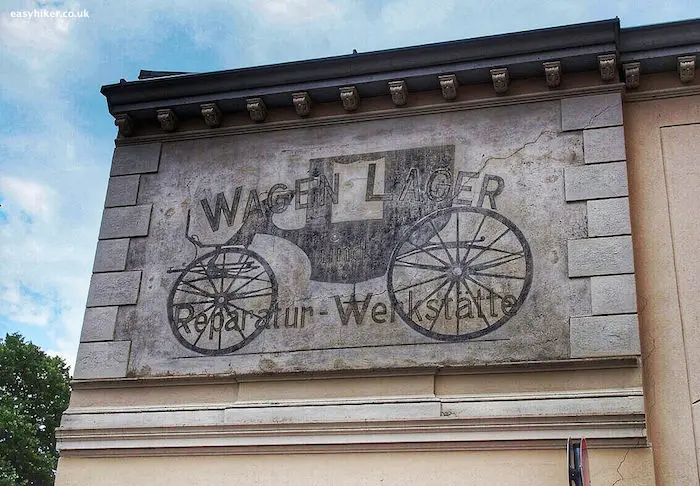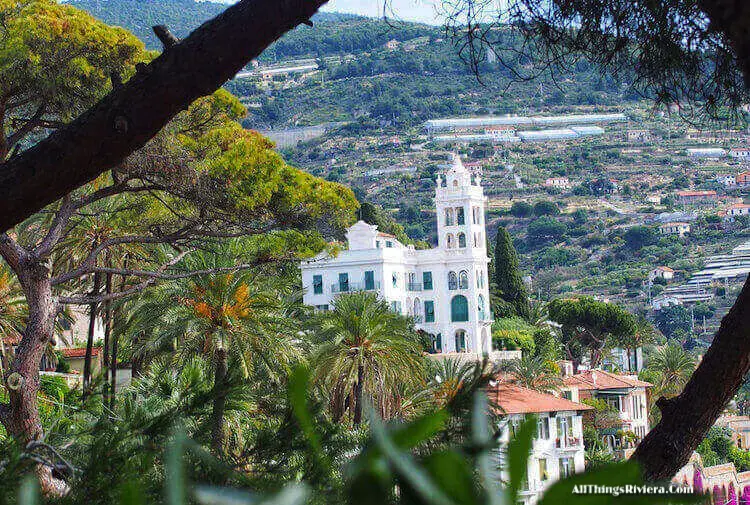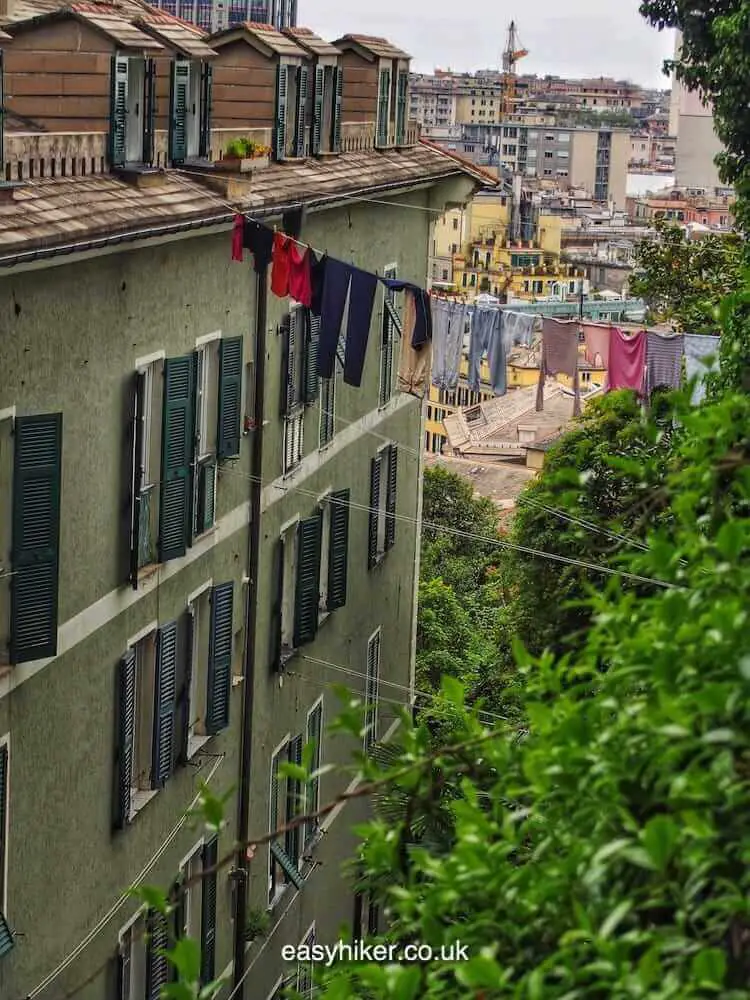Long urban and country walks are great but they do take up a lot of time: time to organize and to prepare, time to travel, time to do the actual walking.
Such walks can easily become projects around which you have to structure not only the day itself but your entire weekend break, squeezing other things you might want to do into a couple of stressful hours on Day Two.
But here is the good news: alternatives for less cumbersome day trips are now at hand, at least for the French Riviera.
The tourism office of the Département des Alpes Maritimes has decided to complement its excellent Randoxygene range of guides for hiking trips with another guide for visits to gardens.
These gardens are compact in size and frequently located in downtown areas, a bus or tram ride away from your holiday base, so you can easily organize an outing that would take no more than a couple of hours off your holiday time budget.
Some of the gardens in the brochure will be familiar to you if you are a regular visitor of our site, but others may not, and we will introduce you to a few of those lesser known gems of the French Riviera over the next few weeks and months – whenever we ourselves feel too stressed or too tired to undertake anything major.

We will start today with a garden in the region’s capital of Nice, mainly because that is the most likely city in the area you will get to visit. Practically all visitors of the region will come to or at least pass through Nice, if for the sole reason that it has the only international airport within the region.
We Give you the Parc Chambrun of Nice
The site of the Parc Chambrun to the northwest of the town centre was used as farmland until the mid 19th century and converted into a landscaped garden following its acquisition by a Parisian aristocrat, the Comte de Chambrun.
After WWI, the garden was swallowed up by the expanding city of Nice. The municipal government, however, made sure that at least one section would be preserved as a green space when it purchased the small hill in the centre of the garden and turned it into a public park, today’s Parc Chambrun.
On its southern – and steeper – flank, the hill is interlaced by a succession of terraces …

… which invite you to take a stroll …

… or to take a brief rest under palm trees.
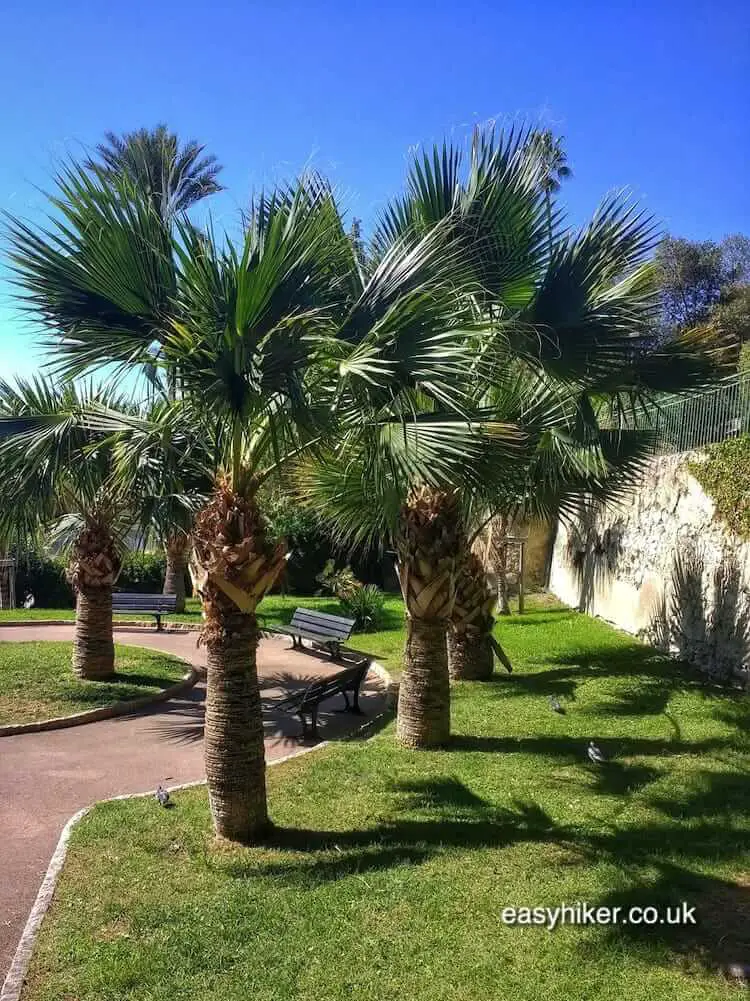
To change between the different levels, you can use a charming stairway that has been cut into the original limestone.
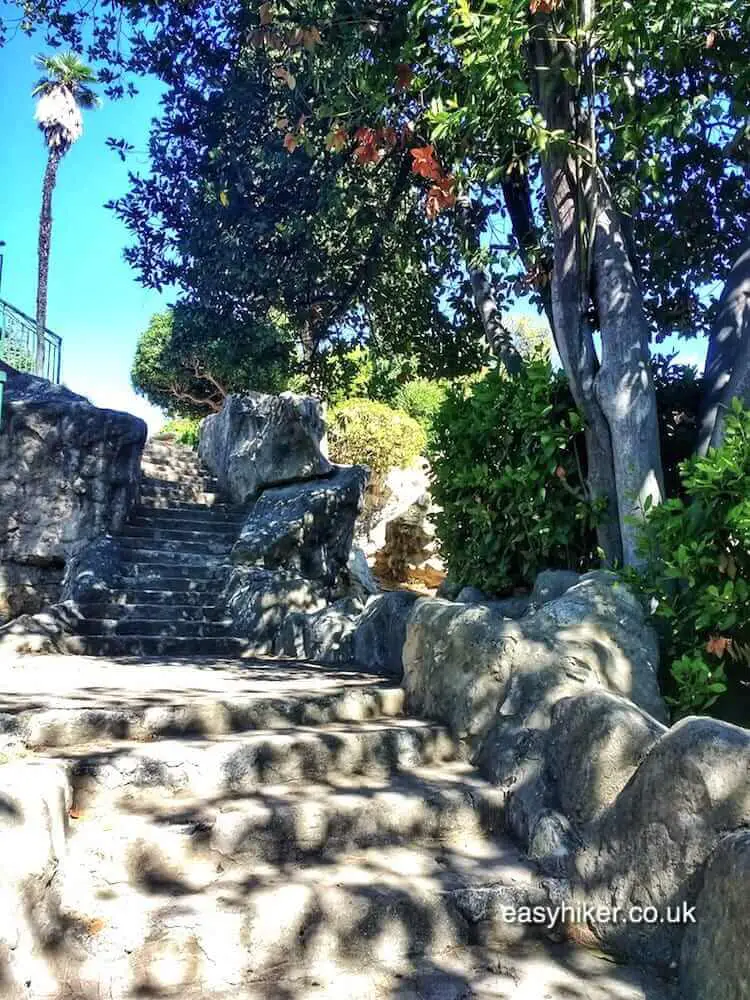
There is a wider, central stairway, too, which takes you uphill just underneath the parc’s centrepiece: the glorious Temple of Diana.
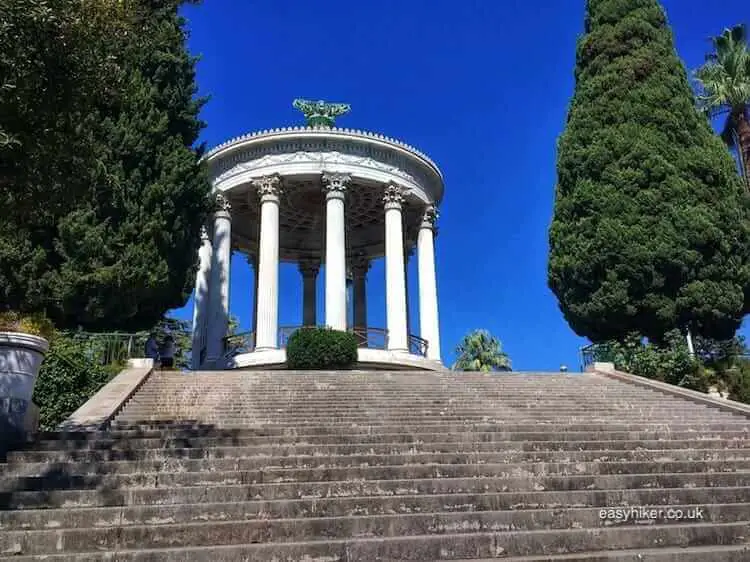
This temple was a gift of the Comte de Chambrun to his wife, which may be the reason why it is known today as the “Temple of Love” – and why it is such a popular backdrop for wedding photos.
Many freshly married couples come here straight after their civil ceremony to pose in front or underneath the temple’s imposing pillars, which reach the astonishing height of 19 metres.
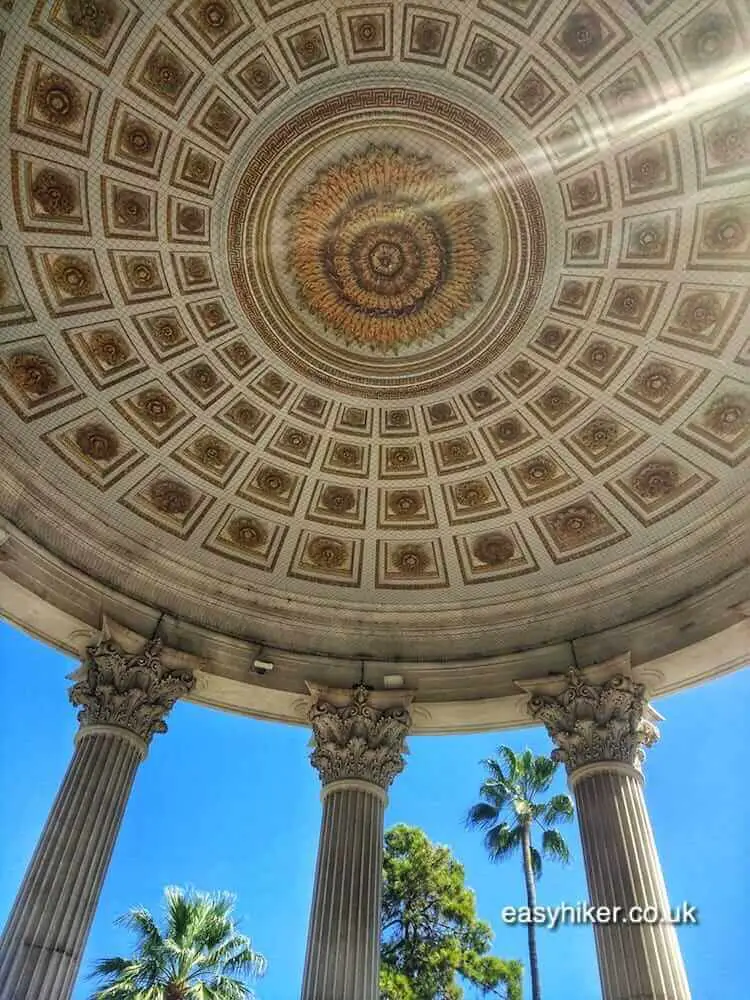
The Comtesse de Chabrun came from an even wealthier family than her husband: she was the heiress of the Baccarat company, makers of the world’s finest crystal chandeliers.
The Comtesse was also a great lover of music. That was the purpose of the temple: to serve as the bandstand for classical music soirees, mainly in the winter season, when the Chambrun gardens became the place to meet for the city’s cultured elite – which, at the time, included members of the European aristocracy who liked to spend the cold months of the year in the mild climate of the Riviera coast.
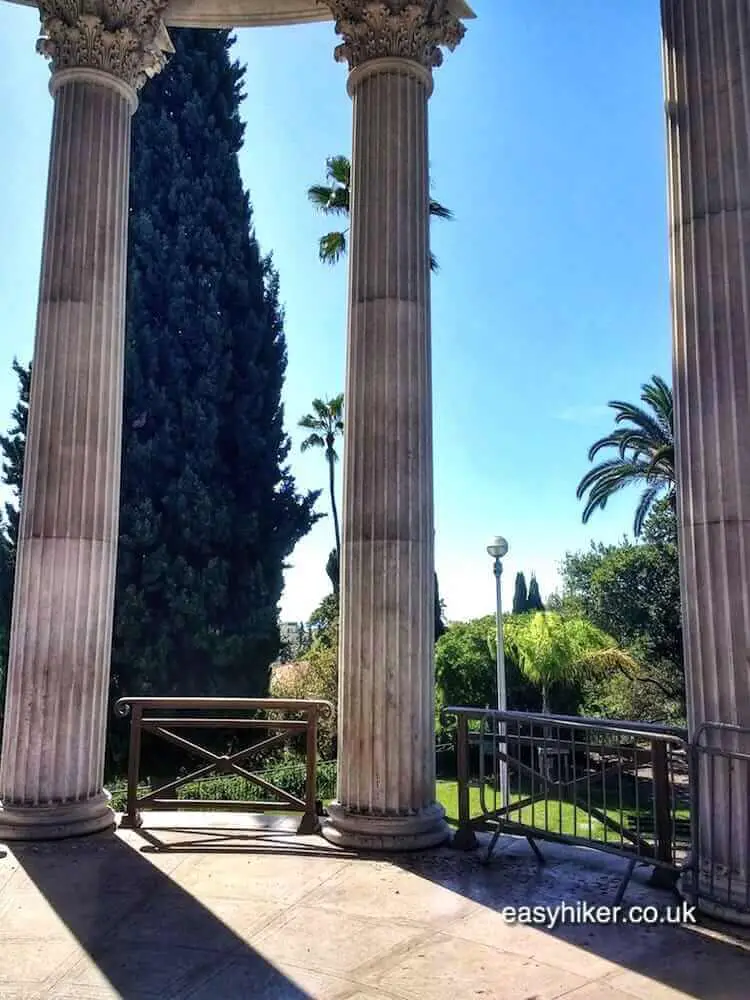
In many ways, the temple stood at the heart of the original Chambrun estate. Inasmuch as you can draw conclusions about the relative importance of size from their size, the temple appears to have dwarfed even the family residence.
Judge for yourself: leave the park through the exit on Avenue George Sand and then turn right into Avenue de Vigny.
The so-called Chateau de Chambrun – built in the late 19th century – stands on the corner of the Vieux Chemin de Gairaux and looks more like the residence of a successful businessman than like an aristocratic chateau in the fashion of Chenonceaux or Versailles.
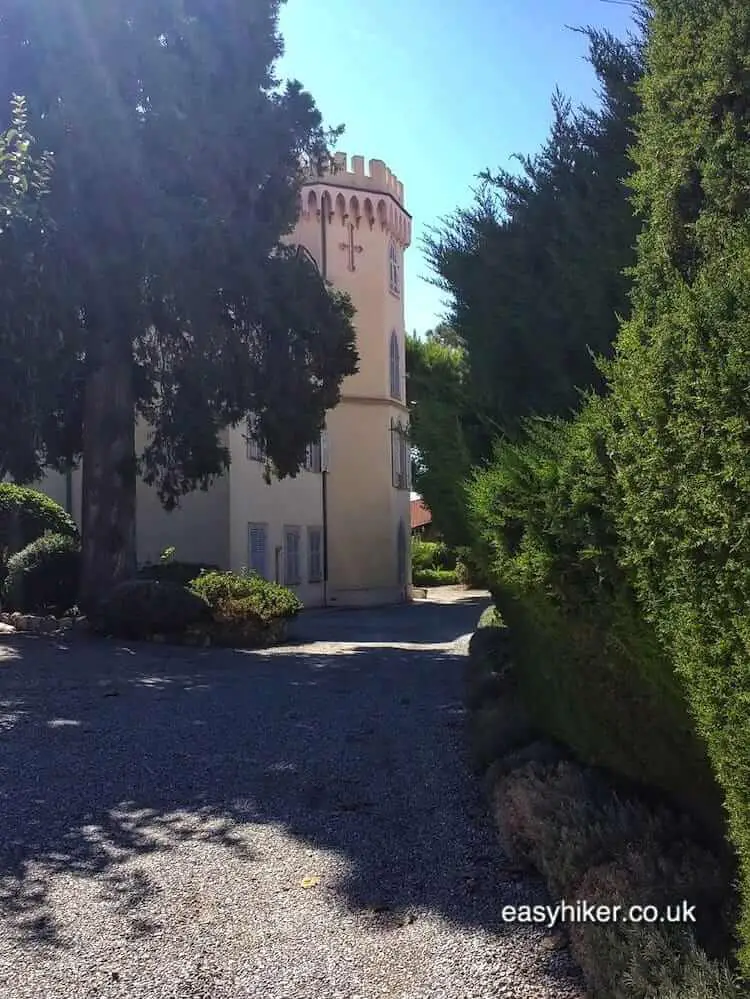
It has, however, preserved its character as a medieval fantasy rather well. The Chambrun family may have moved elsewhere a long time ago, but the Gothic-style visitors’ entrance appears to have struck a chord with the new owners – the building is nowadays sub-divided into flats – as long as they could combine it with a more contemporary intercom system.

To get to the Parc Chambrun, take the tramway (line T1) from the town centre in the direction of Henry Sappia and descend at the station Le Ray.
Turn right into Rue George Bidault to discover another park – which has a story that is just as interesting.
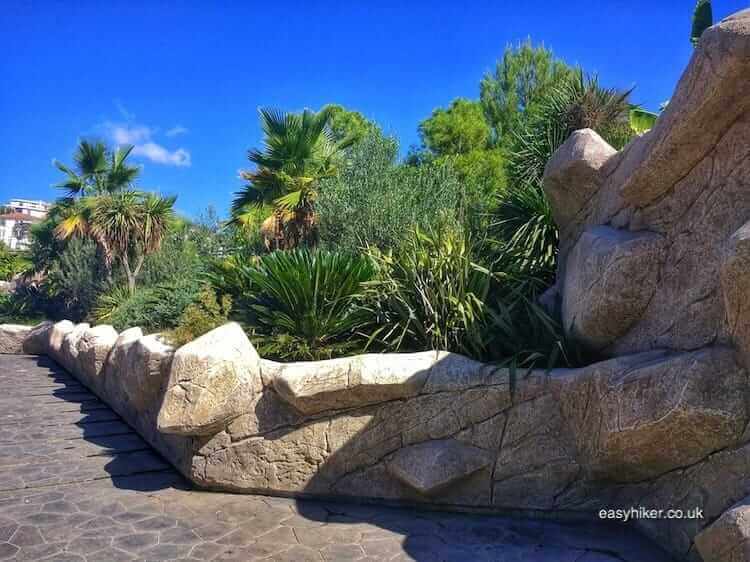
The Parc de Ray was created on the land formerly occupied by the city’s main football stadium, the Stade de Ray, which was the home ground home of OGC Nice until the end of the 2013 season. (It was demolished in 2017.)
The Stade de Ray suffered from a relatively small capacity (17,000 seats) and was replaced by the Allianz Riviera (36,000 seats), following which OGC Nice – until then a lower-midfield site in the first French Division – experienced an almost immediate uptick in its fortunes. (Nice can now compete with teams like Lyon and Marseille for the coveted Champions League places.)
The new park still contains many reminders of its past: even some parts of the stadium’s old building fabric have been carefully preserved.
Just as interesting are the newly developed buildings that stand on the park’s perimeter.

They belong to an ambitious écoquartier project, which is intended to usher in a new era of “urban living”. The principle of constructing buildings from a steel frame and prefab concrete elements does not seem to be particularly innovative, but the integration of wood pilings and Mediterranean flora certainly is. Give the project another few years, and it may very well look truly spectacular.
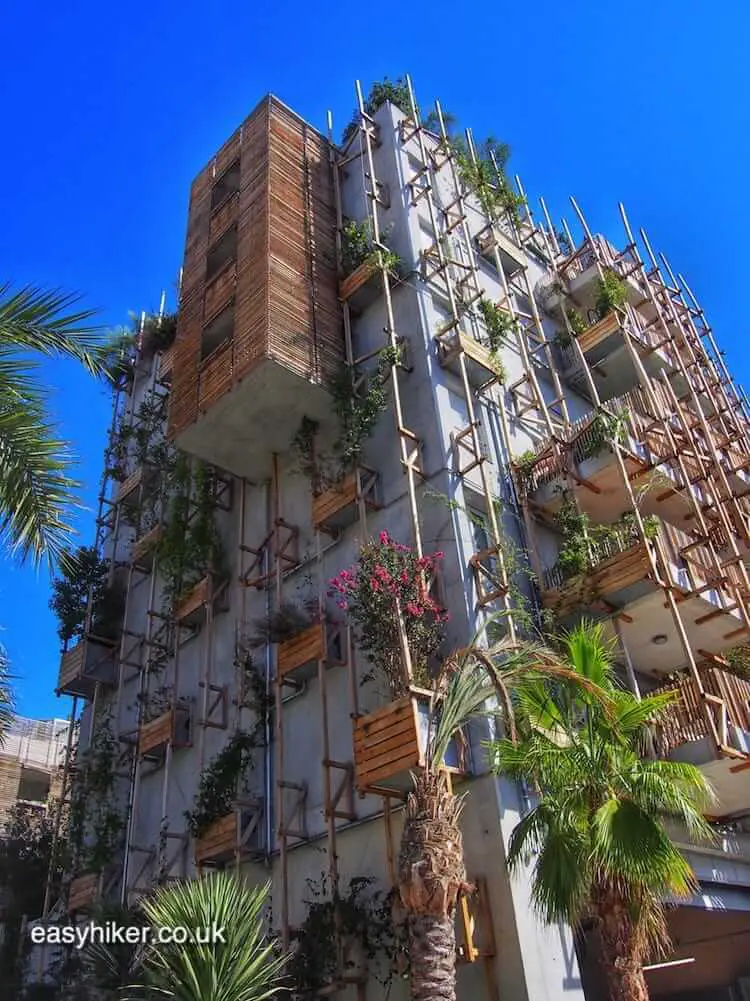
Throughout this trip and the ones that will follow in this series of “Riviera Gardens”, you should not forget that the actual destination is only half of the fun and that it is equally rewarding to pay attention to all the little details along the way.
You will see things that no tourist guide ever mentions – and for good reasons, too: no famous artist has played a role in their creation, and they have never played any part in any event of historical significance.
Still, you will be able to discover things that have the power to amuse – and to put a smile on your face, if only for a fleeting moment. Surely, that must count for something, too?
